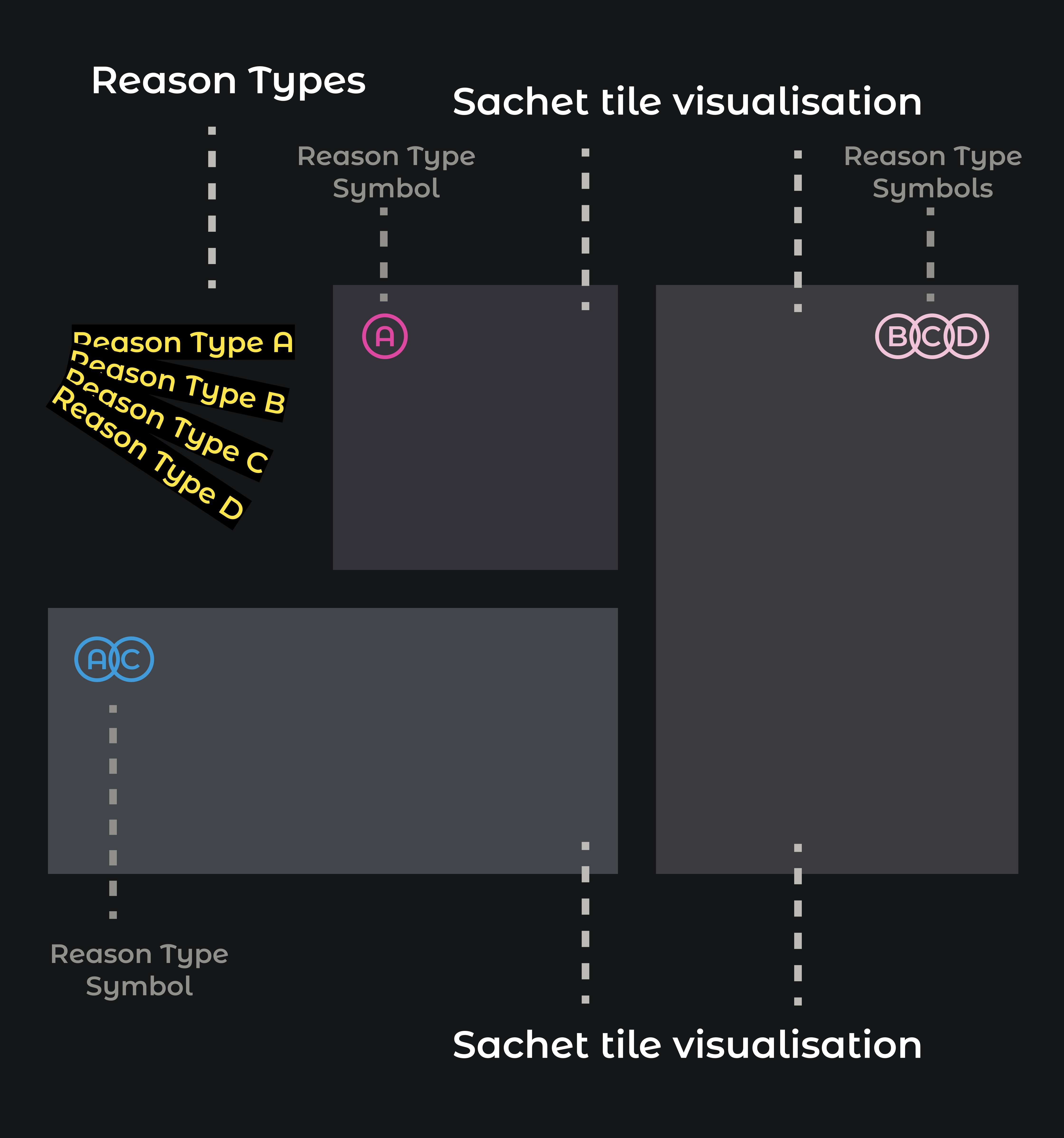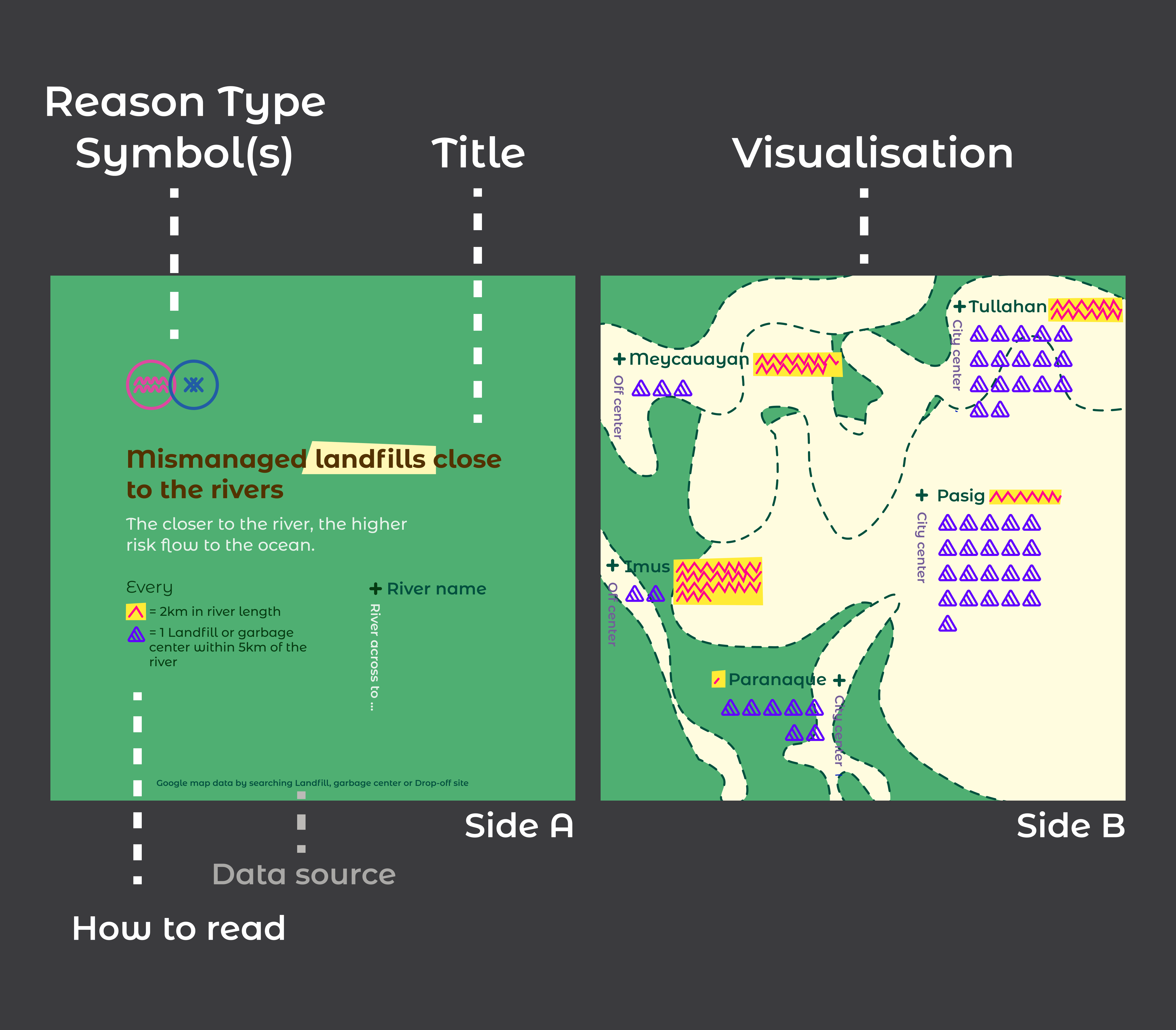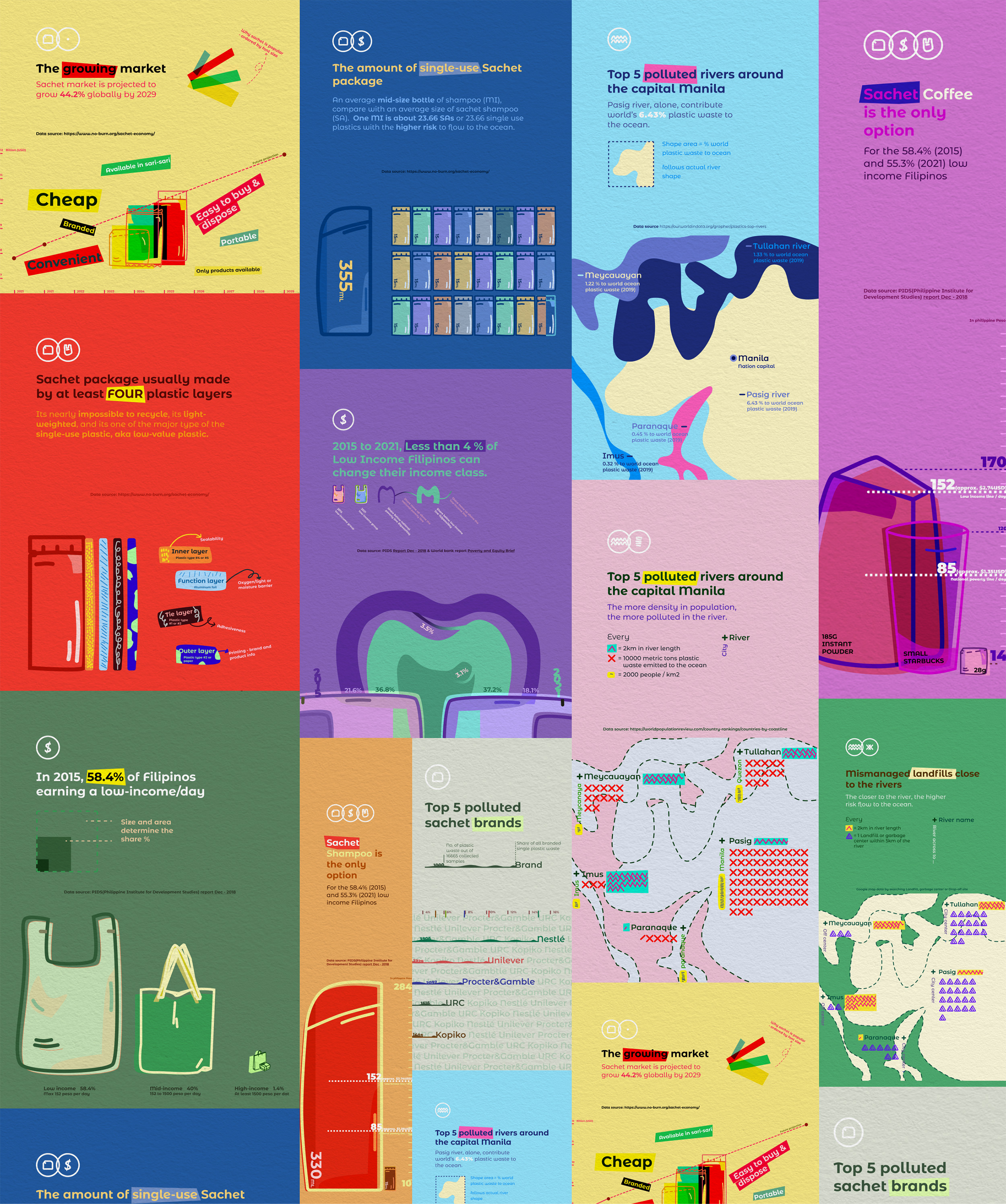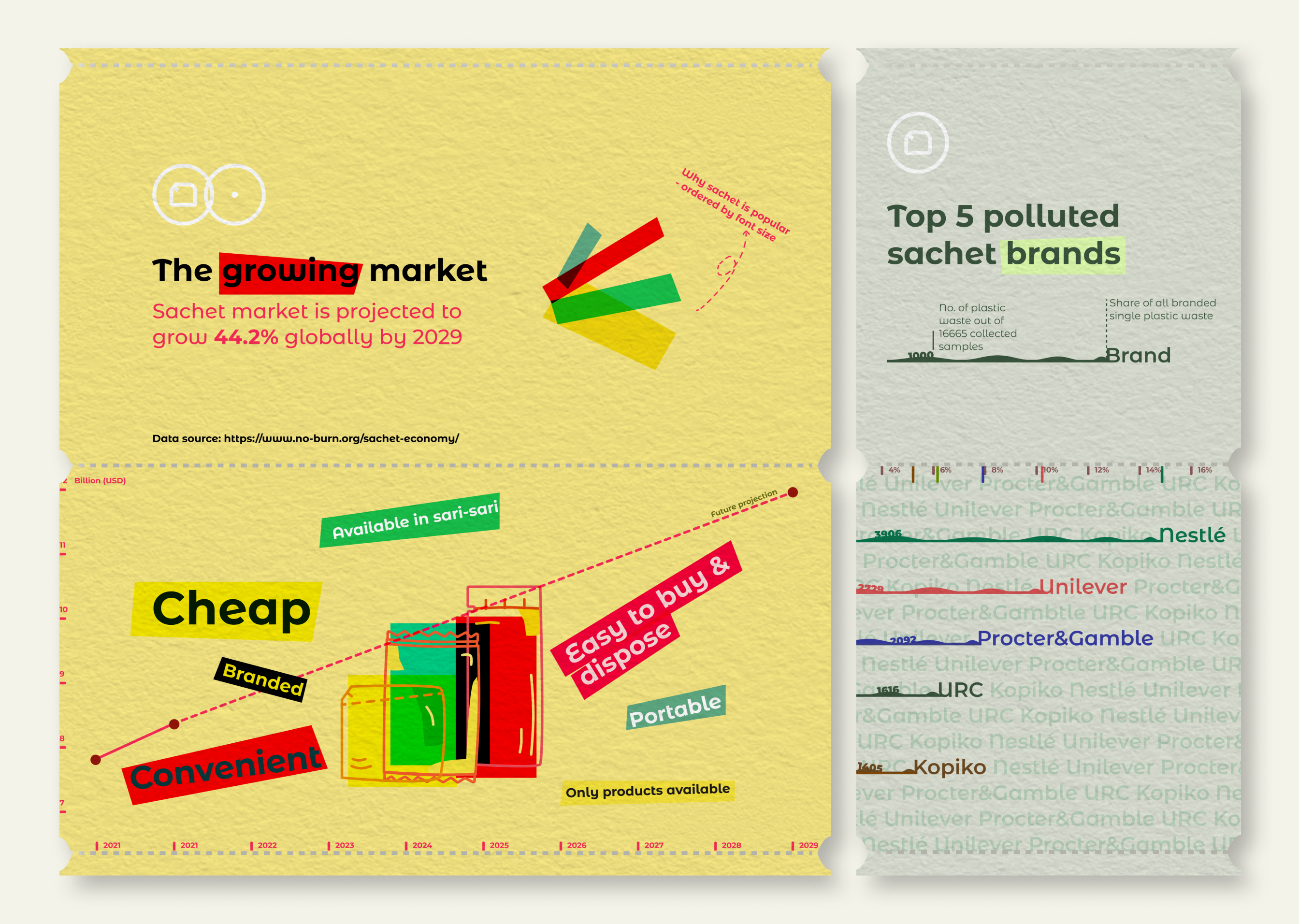

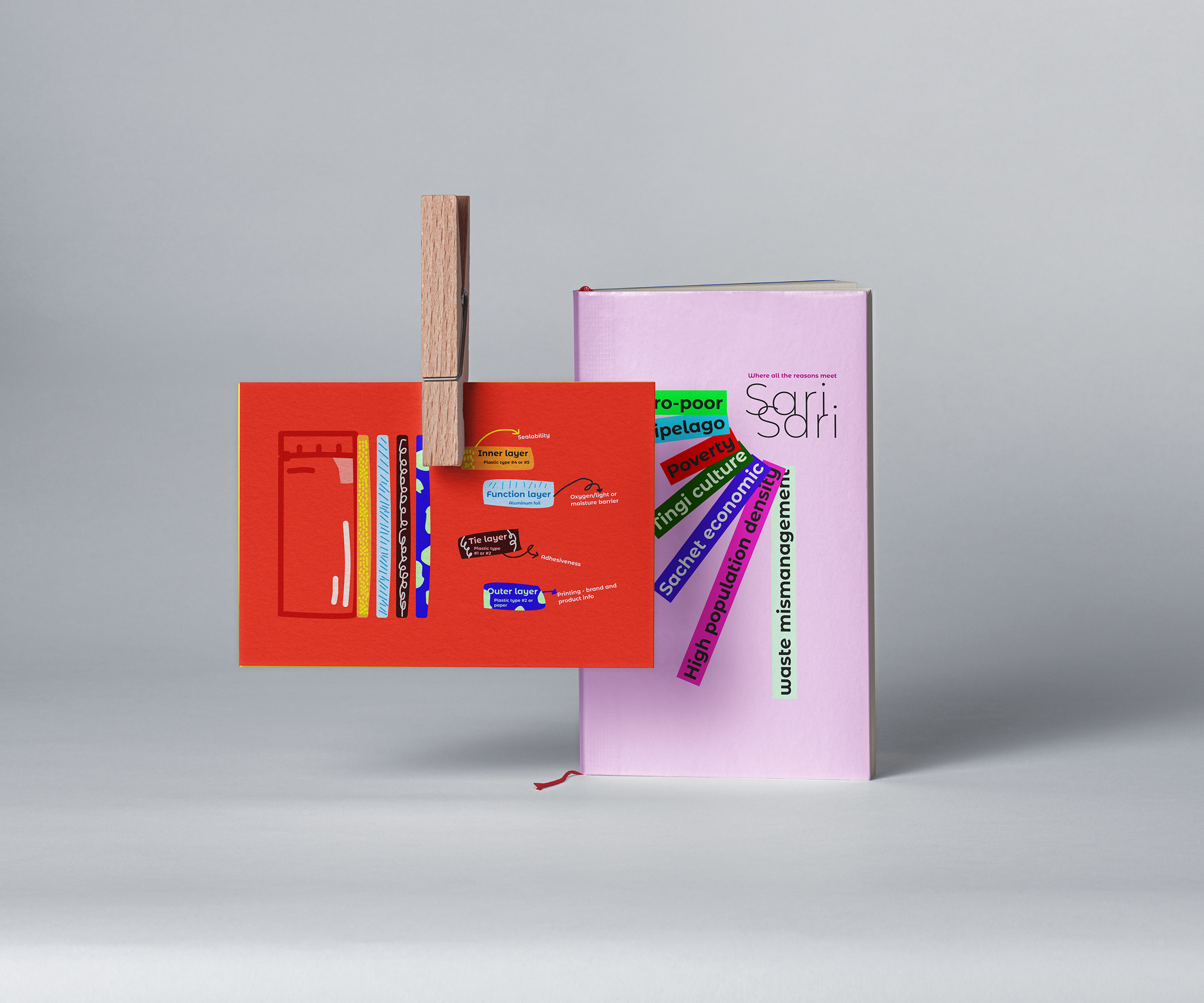
A sari-sari store is a small neighborhood retail shop designed to meet the needs of its local community. Typically stocked with vital groceries like canned goods, instant noodles, coffee, soda, and household essentials such as soap and shampoo—items Filipinos use in their daily lives.
Notably, these products are often offered in small, convenient packages. The store derives its name from the Filipino term for variety, "sari."
The Philippines claimed the top spot globally, with this relatively compact nation contributing a staggering 356,371 tons of plastic waste to the ocean in 2019—surpassing 36% of the world's total. In stark contrast, the second-highest contributor, India, accounted for 126,513 tons, which was less than half of the Philippines' contribution.
What led to this significant imbalance?
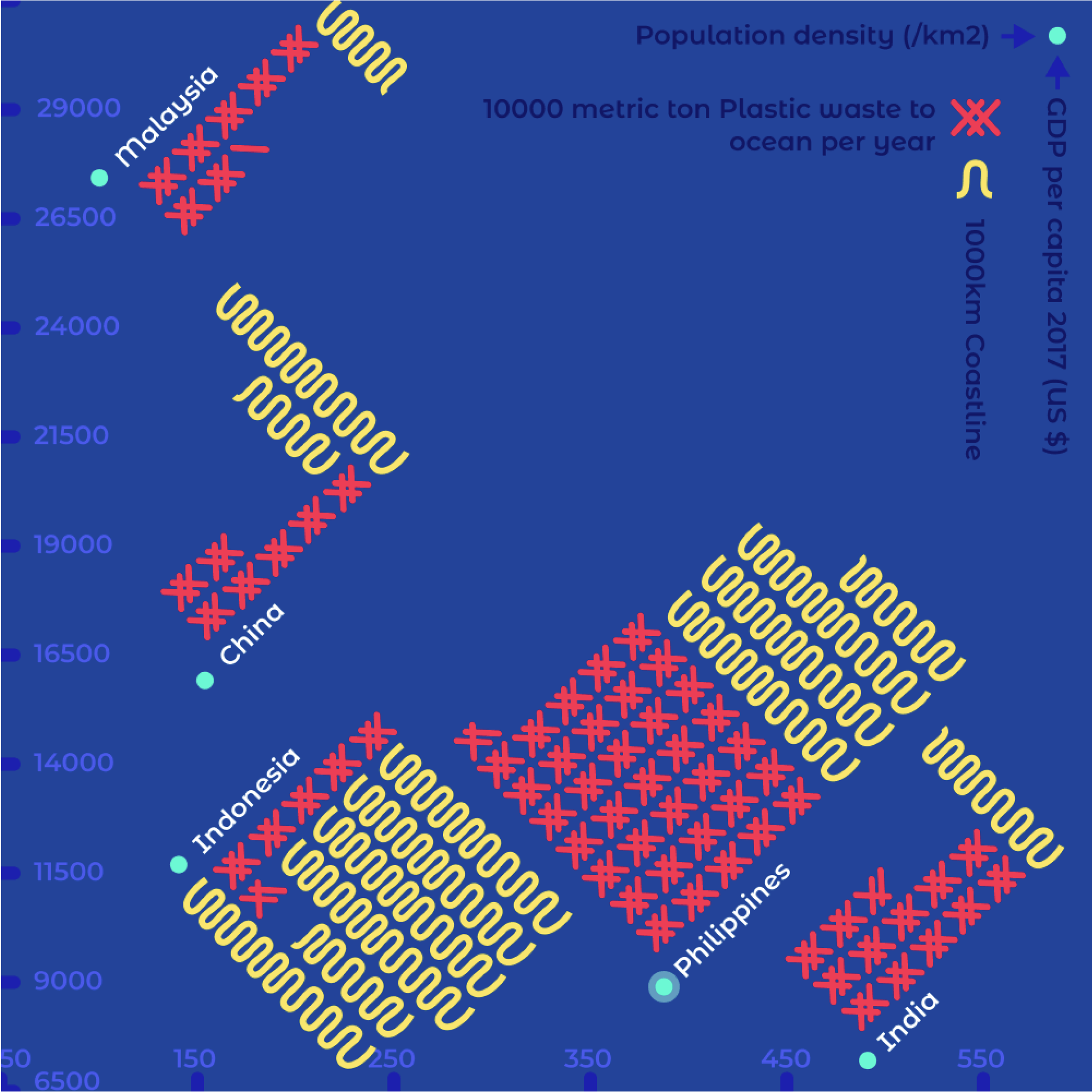
Data visualization on the global top 5 ocean plastic waste contributors. On top of the Plastic waste to ocean per year, I also added GDP per capita; population density, and the coastline length data to introduce more context around this problem.
Initially, the data collected primarily originated from OWD, covering aspects such as the global plastic waste share emitted to the ocean and the top polluted rivers...
As I delved deeper into this topic, I found myself astounded by the complex nature of the problem. It became evident that the issue wasn't solely attributable to one or two factors but potentially involved a myriad of influences. Motivated by this realization, I decided to broaden my data collection efforts, encompassing both qualitative and quantitative data.
Guided by the "Editorial Thinking" principle outlined by Andy Kirk - Angle, Frame, and Focus, I synthesized a substantial amount of data from diverse sources and perspectives. This approach enabled me to craft a systematic narrative with a specific focus—embracing the complexity of the issue and presenting a rich context surrounding it.
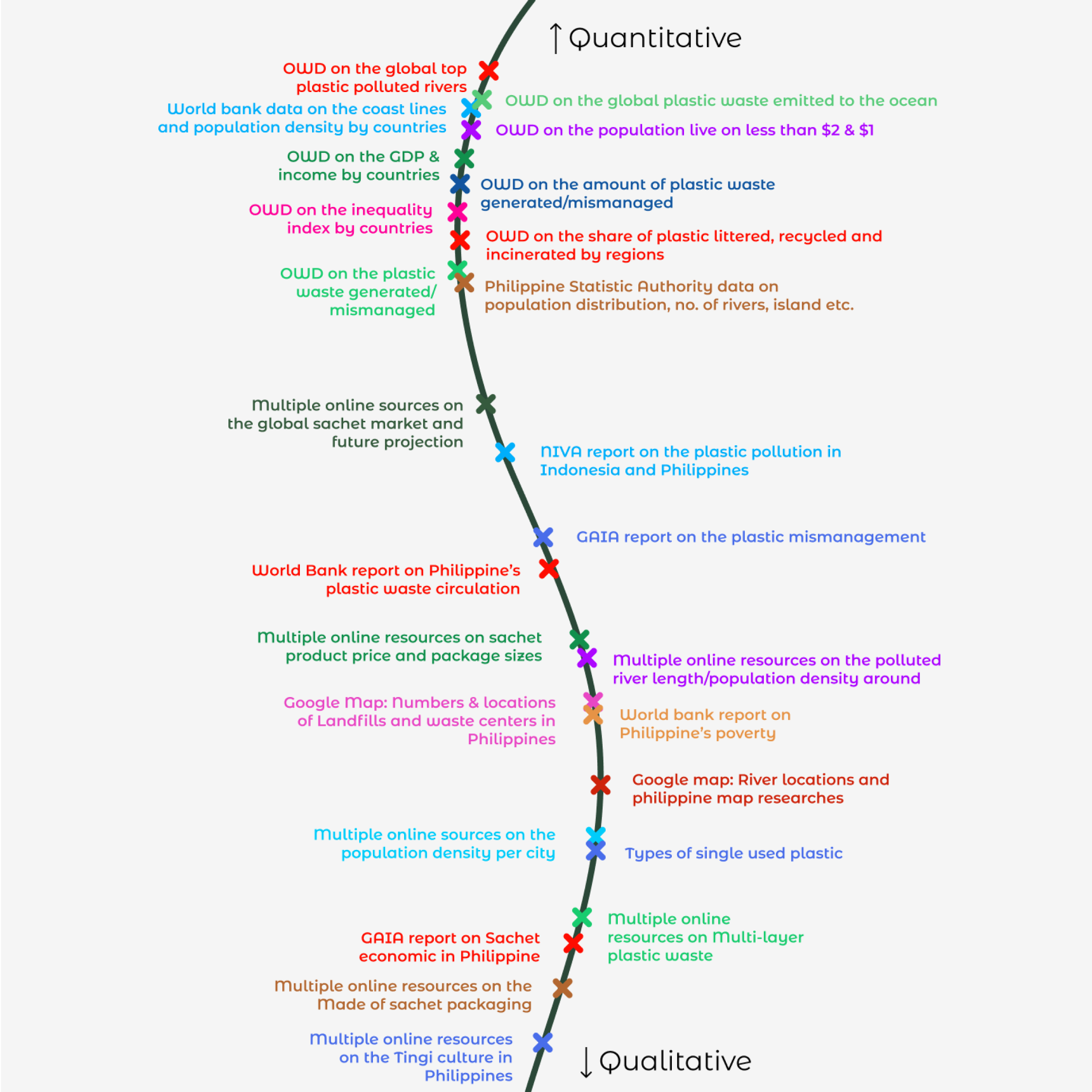
Data collected to be used in this project, in total of 25 data sources from both quantitative and qualitative data.
Upon analyzing the collected data, I've categorized some of the primary reasons contributing to the intricate plastic problem in the Philippines.
The Philippines, being an archipelago with an extensive coastline and numerous rivers, faces an elevated risk of waste mismanagement. Compounded by the country's unique "Tingi" culture, where individuals prefer purchasing groceries and essentials in small portions, it has given rise to one of the largest Sachet Markets globally. This intersects with long-standing issues of poverty and inequality, forming a complex network of interconnected problems. Managing this intricate web poses a significant challenge in controlling the vast plastic waste issues in the country.

Reason tiles designed to as part of the final design outcome. These are an important part of the storytelling.
Addressing the intricacies of this complex issue requires a sophisticated design, drawing inspiration from G. Lupi. Imagine a non-linear story set in a virtual Sari-sari shop, reminiscent of those found in the Philippines. This remote corner store specializes in selling sachet products, mirroring the real-life situation.
In my interpretation of the Sari-sari stall, visualizing the designed sachet tiles showcasing the data story. Each tile is a piece of the puzzle, contributing to answering the overarching question: "Why is the Philippines the world's No. 1 contributor to plastic waste in the ocean?" This design approach allows for a unique and engaging exploration of the multi- aspects surrounding the issue, offering a rich and comprehensive understanding.

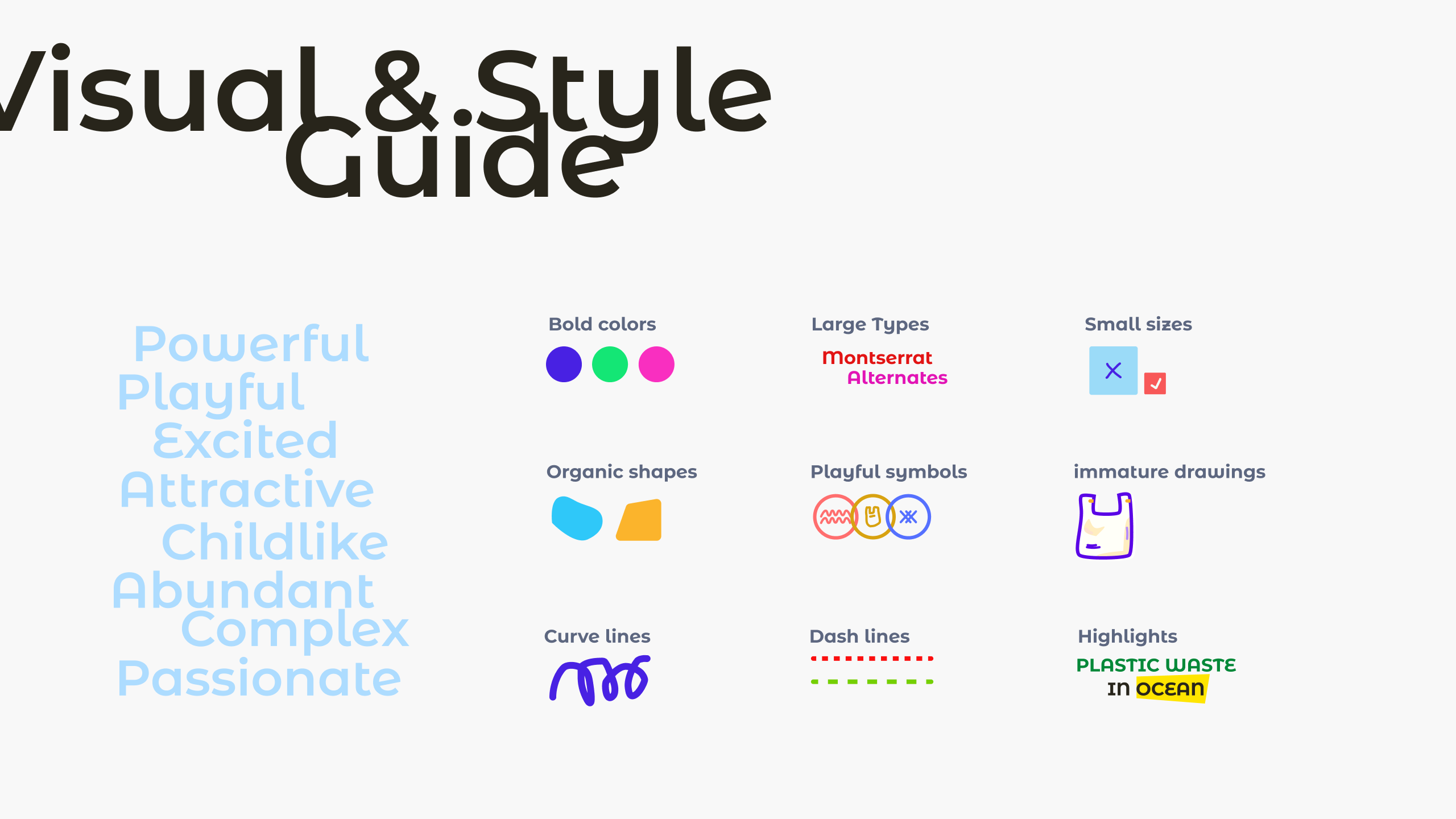
I've developed a visual system to serve as a guide, enticing people to delve into the story and encouraging them to explore multiple visualization tiles.
Each small-sized sachet tile, resembling the common sachet products in the Philippines, is adorned with related reason types and symbols as defined on the top level. These symbols serve as visual cues, providing a quick reference to the overarching categories.
Within each sachet tile, a visual story unfolds, incorporating one or multiple interconnected reasons. This layered approach not only enhances the aesthetic appeal but also facilitates a seamless and immersive exploration of the multifaceted reasons contributing to the Philippines' intricate plastic problem.
